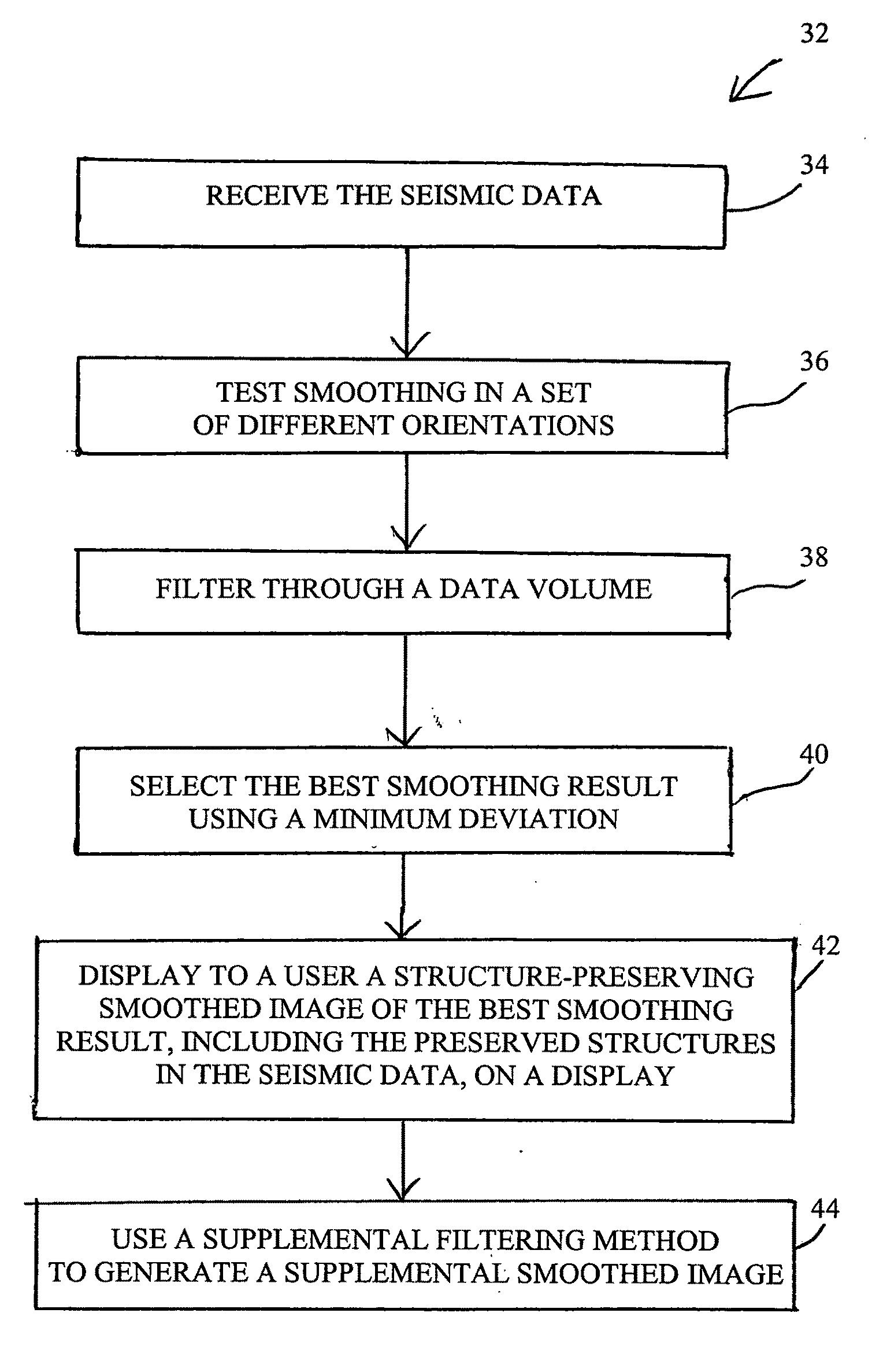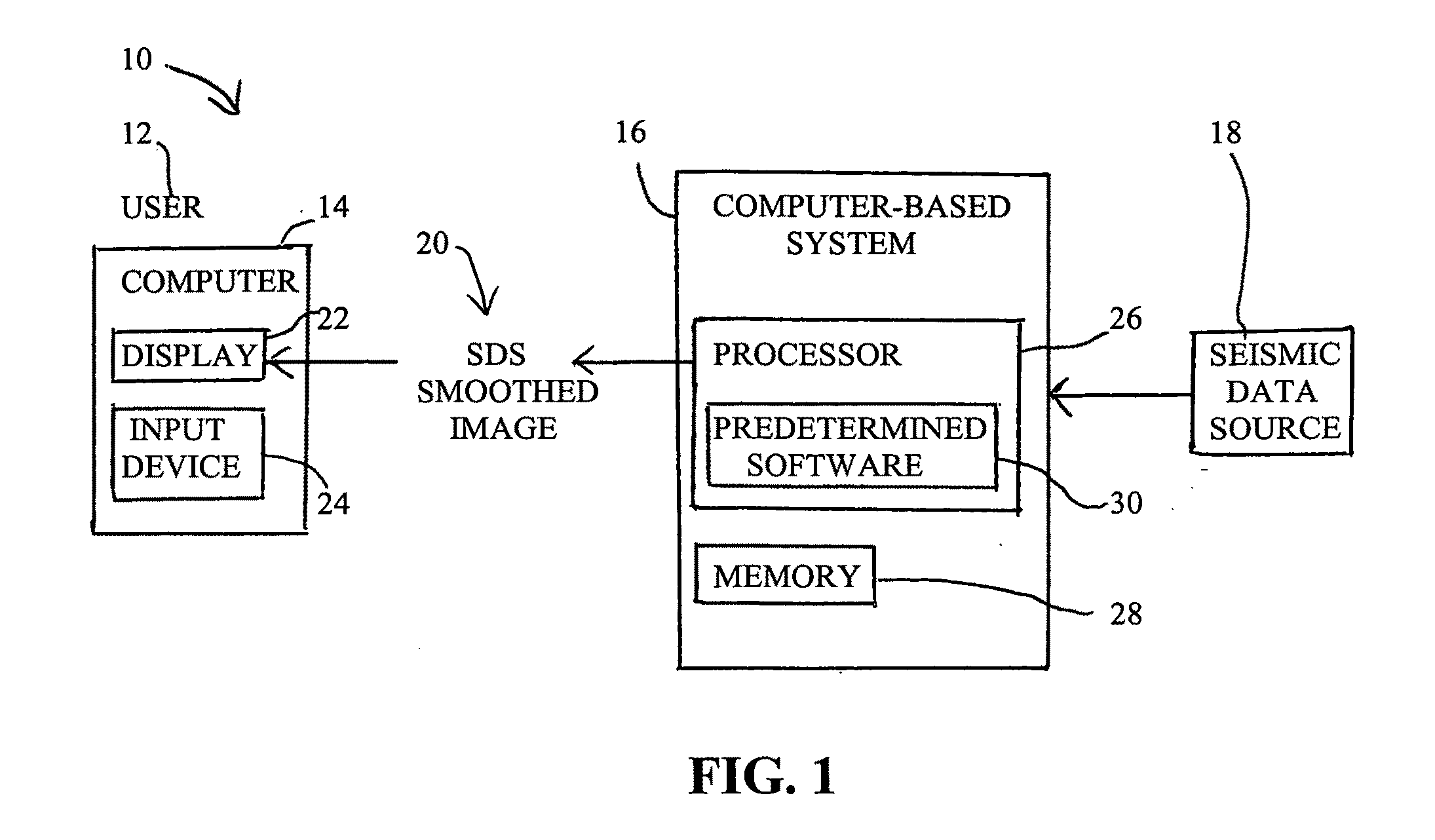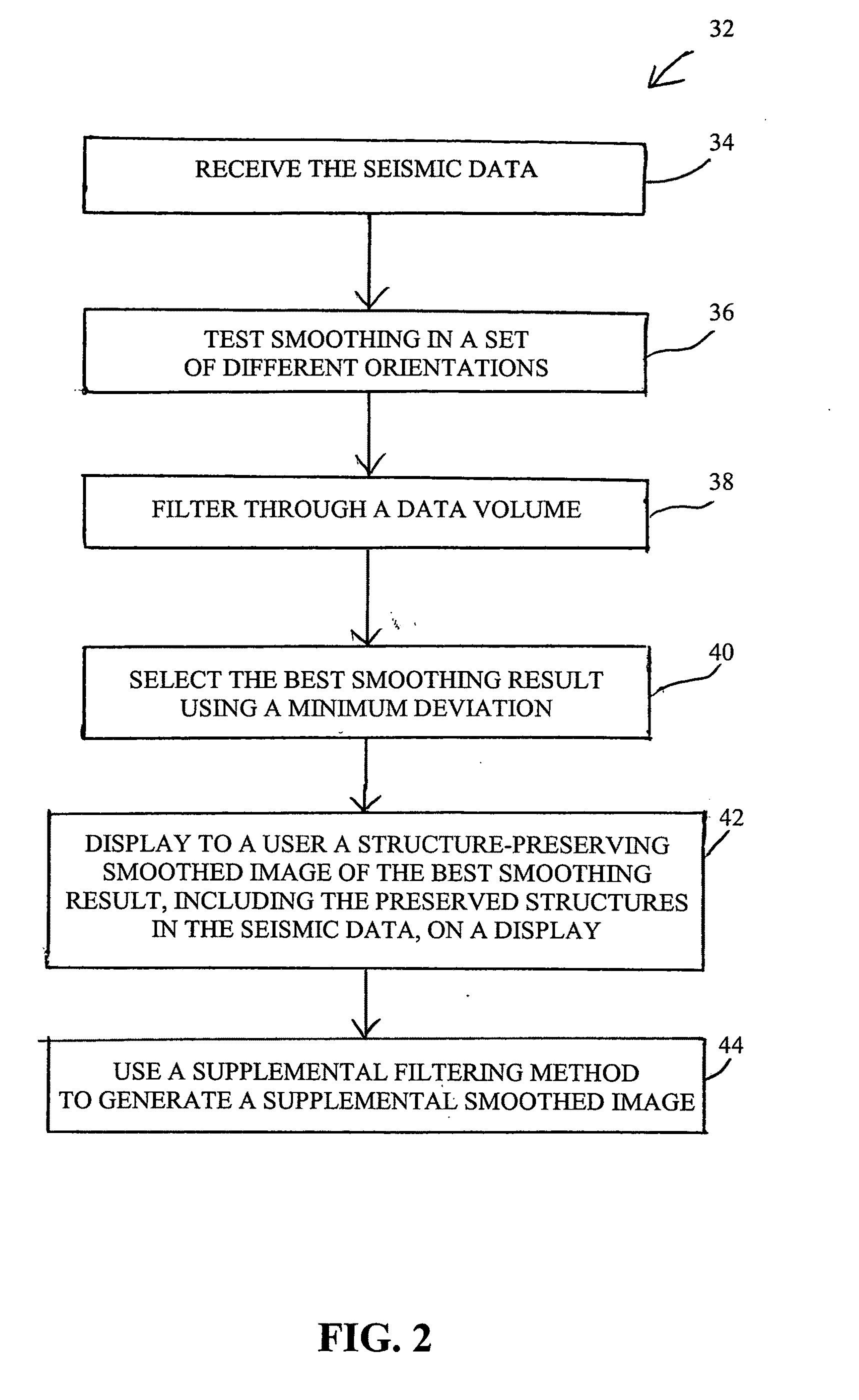Reducing noise in 3D seismic data while preserving structural details
- Summary
- Abstract
- Description
- Claims
- Application Information
AI Technical Summary
Benefits of technology
Problems solved by technology
Method used
Image
Examples
application examples
[0035]Preliminary results of using SPS filtering in order to reduce random noise in seismic sections, eliminate noise footprints, and enhance coherence image are described below.
[0036]In a first example, a seismic section is displayed in FIG. 5A. After SPS filtering with a 5×5×5 sub-window and minimum deviation rule, as shown in FIG. 5B, the random noise is obviously reduced and horizon continuity is improved. These improvements would aid in interpretation by the user 12 of features and structures, for example, in a reservoir, as well as auto-tracking horizons.
[0037]In another example, a footprint may be visible in seismic data images, where the footprint is a patterned noise resulting from acquisition or processing bias. It usually appears in a time slice in seismic amplitude data. FIG. 6A is a seismic time slice in which horizontal stripes are visible. The horizontal direction is sub-line and the vertical direction is cross-line, and the line spacings are 50 m and 25 m respectivel...
PUM
 Login to View More
Login to View More Abstract
Description
Claims
Application Information
 Login to View More
Login to View More - R&D
- Intellectual Property
- Life Sciences
- Materials
- Tech Scout
- Unparalleled Data Quality
- Higher Quality Content
- 60% Fewer Hallucinations
Browse by: Latest US Patents, China's latest patents, Technical Efficacy Thesaurus, Application Domain, Technology Topic, Popular Technical Reports.
© 2025 PatSnap. All rights reserved.Legal|Privacy policy|Modern Slavery Act Transparency Statement|Sitemap|About US| Contact US: help@patsnap.com



